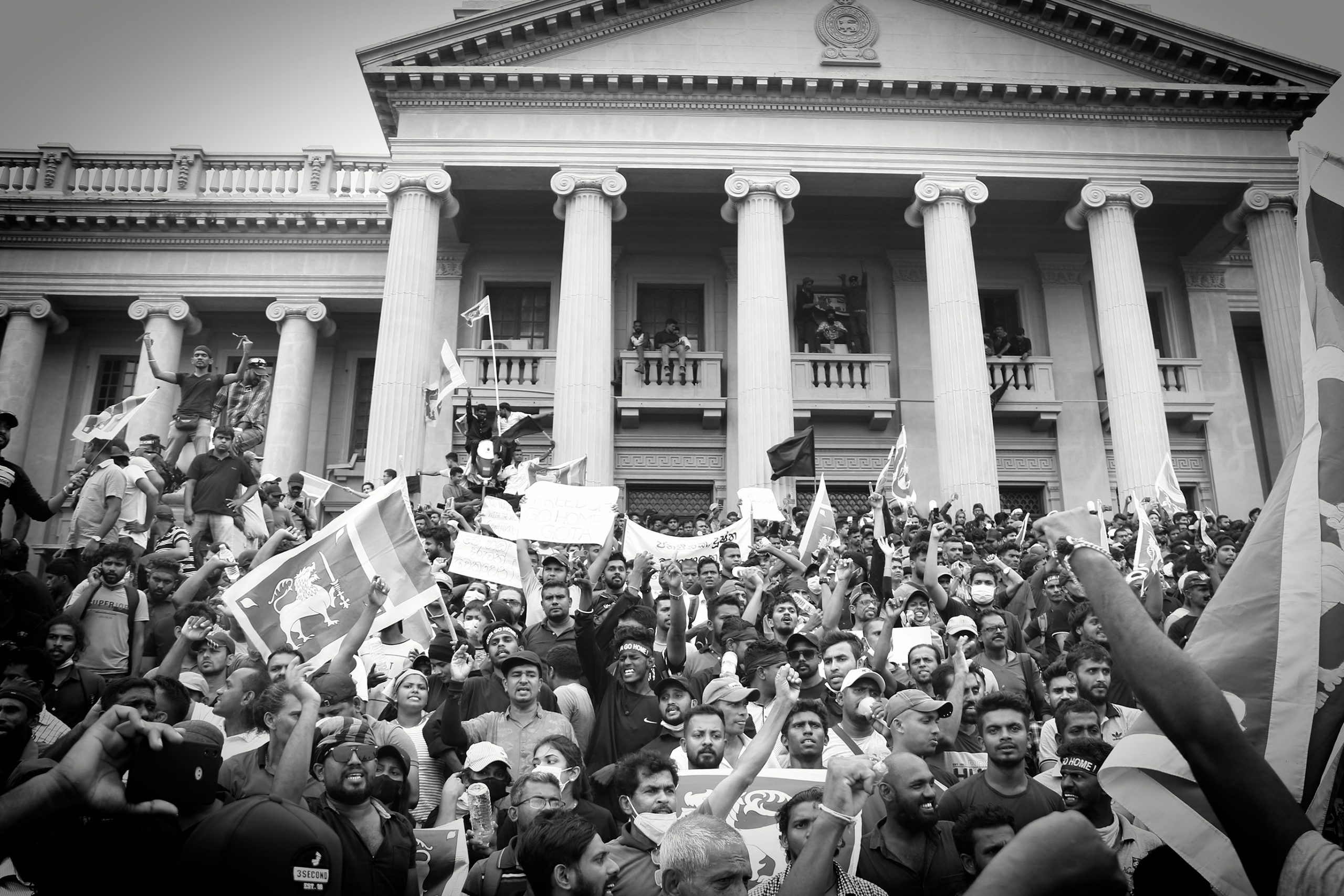WOMEN | PHOTOGRAPHY VI

Editorial
Malavika Karlekar
This edition of the newsletter showcases the work of two women photographers who write evocatively about their experiences with the camera. What interested me as the Editor is that the locales of their narratives are so very different – the inhospitable yet beautiful terrain of the Himalayas on the one hand, and on the other, the hot streets of Colombo on the boil.
With her travelling companion Sumita, writer and photographer Sohini Sen explores Ladakh: the ‘hidden treasure house of luxuriant landscapes and rich history.’ Documenting a decade of travelling over 10,000 kilometres across the Himalayas, Sohini presents us with ‘a fine patchwork quilt of images, woven with the gossamer threads of history.’ Her camera records images along the Line of Control (LoC), from the ‘war-ridden Indian village Hunderman-Brok’, the Suru River that crosses international borders, the seven-metre-high rock-cut sculpture of Maitreya, as well as incredible blue skies and iridescent peaks. Not unexpectedly, she gets Acute Mountain Sickness (AMS) in the Suru Valley, but still decides to make the trip to the more remote Zanskar Valley. More photographs and tales of adventure follow.
Researcher Senani Dehigolla who participated in the mass uprising of 9 July 2022 in the capital of Sri Lanka has a very different perspective on the challenges confronting a photographer and her camera. Despite the presence of heavily armed police, thousands of protesters reached Colombo, demanding the resignation of President Gotabaya Rajapaksa due to the collapse of the state’s ability to serve its people. It was a day when Senani realized ‘the power of people and of photography.’ Undeterred by the lack of public transportation that soon became unavailable and ‘out of service’, and irrespective of class and ethnic differences, people thronged to join the biggest uprising in Sri Lanka’s 75-year history. Almost miraculously, Senani managed to use her camera amidst the crowds surrounding the Presidential Palace, recording raised fists and bold graffiti on walls, as well as stony-faced armed personnel. Apart from the compelling photographs taken under extremely difficult – if not dangerous – circumstances, both essays have interesting personal reflections by the two author-photographers on the role of the camera and its place in their lives.
Neatly sandwiched between the two personal essays is a book review by academic Suryanandini Narain that provides a perspective on how women have historically viewed gendered realities through the camera. In How We See, the editors Russet Lederman, Olga Yatskevich and Michael Lang look at women photobook-makers, foregrounding the premise that ‘how we see photobooks made by women is inherently different from how we see those made by men.’ Representing ten diverse geographic regions, photobooks published between 1843 and 2018 are discussed against a backdrop of rich visual material. As expected, the body and sexuality ‘in a masculinized world and concerns around home and family alongside feminist self-assertion index the photobook’, some of which are self-published if not crafted by hand. Combining praxis and text, this edition of the newsletter continues our discussion of women and the camera – as practitioners and as engaged commentators.
CONTRIBUTIONS:
DYING TO FEEL ALIVE: A REMARKABLE JOURNEY INTO THE SURU AND ZANSKAR VALLEYS OF LADAKH
Sohini Sen
REVIEW: ‘HOW WE SEE’, EDS. RUSSET LEDERMAN, OLGA YATSKEVICH AND MICHAEL LANG, 10×10 PHOTOBOOKS, 2018
Suryanandini Narain
IN DEFIANCE: PROTEST AND PHOTOGRAPHY
Senani Dehigolla
 Malavika Karlekar is Editor, Indian Journal of Gender Studies and Curator of Re-presenting Indian Women: A Visual Documentary, 1875–1947 and the annual calendar based on archival photographs of women, all at Centre for Women’s Development Studies, New Delhi. Since 2001 she has been researching and writing on archival photographs. Her recent publication Of Colonial Bungalows and Piano Lessons: An Indian Woman’s Memoirs (2019), a volume edited with an Introduction by Karlekar narrates childhood memoirs of her mother, Monica Chanda.
Malavika Karlekar is Editor, Indian Journal of Gender Studies and Curator of Re-presenting Indian Women: A Visual Documentary, 1875–1947 and the annual calendar based on archival photographs of women, all at Centre for Women’s Development Studies, New Delhi. Since 2001 she has been researching and writing on archival photographs. Her recent publication Of Colonial Bungalows and Piano Lessons: An Indian Woman’s Memoirs (2019), a volume edited with an Introduction by Karlekar narrates childhood memoirs of her mother, Monica Chanda.
Copy-editing/proofing: Smriti Vohra and Mallika Visvanathan